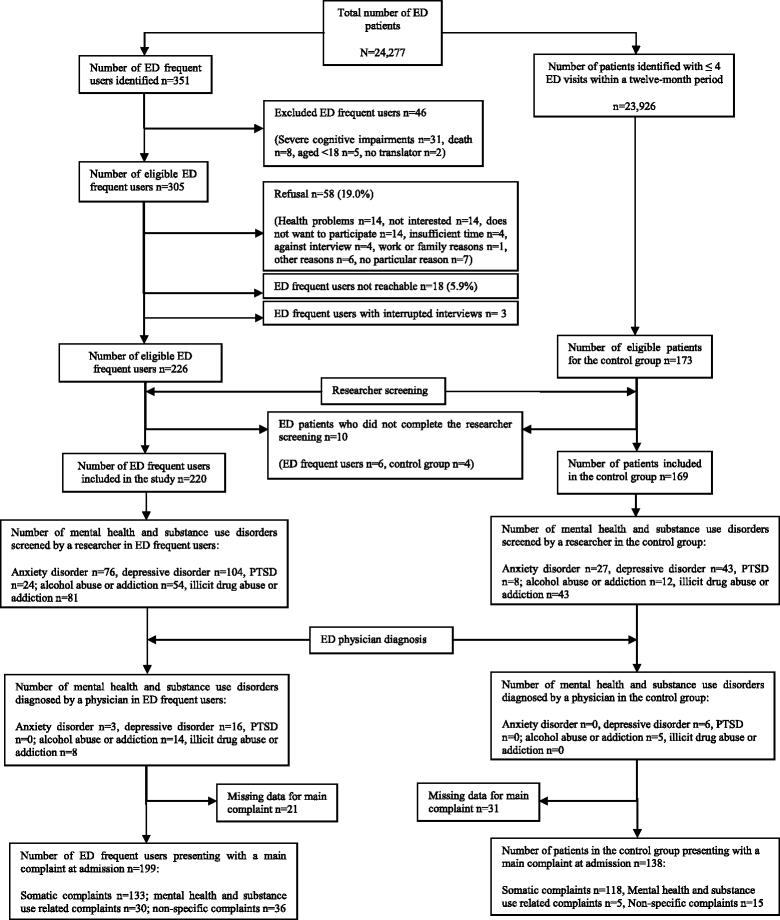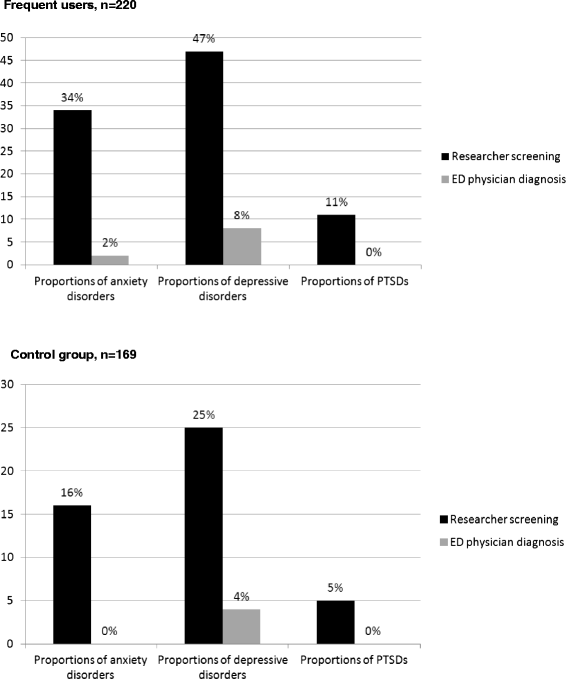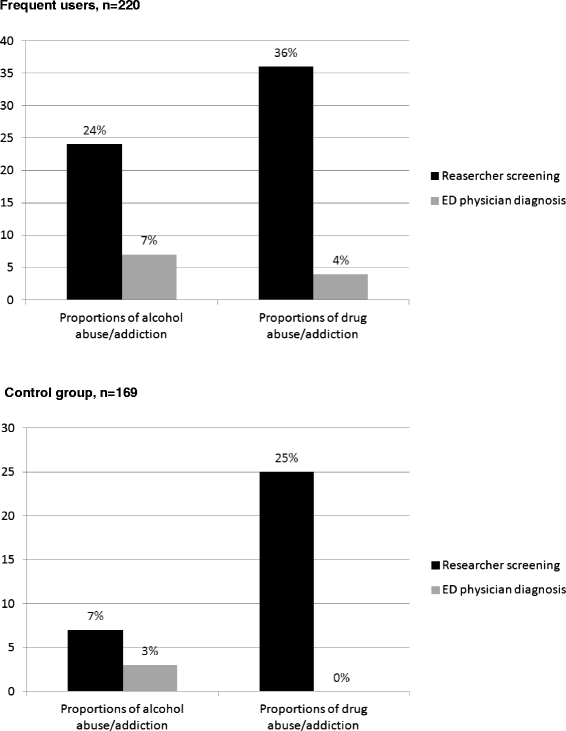Screening of mental health and substance users in frequent users of a general Swiss emergency department
- PMID: 26452550
- PMCID: PMC4600290
- DOI: 10.1186/s12873-015-0053-2
Screening of mental health and substance users in frequent users of a general Swiss emergency department
Abstract
Background: The objectives of this study were to determine the proportions of psychiatric and substance use disorders suffered by emergency departments' (EDs') frequent users compared to the mainstream ED population, to evaluate how effectively these disorders were diagnosed in both groups of patients by ED physicians, and to determine if these disorders were predictive of a frequent use of ED services.
Methods: This study is a cross-sectional study with concurrent and retrospective data collection. Between November 2009 and June 2010, patients' mental health and substance use disorders were identified prospectively in face-to-face research interviews using a screening questionnaire (i.e. researcher screening). These data were compared to the data obtained from a retrospective medical chart review performed in August 2011, searching for mental health and substance use disorders diagnosed by ED physicians and recorded in the patients' ED medical files (i.e. ED physician diagnosis). The sample consisted of 399 eligible adult patients (≥18 years old) admitted to the urban, general ED of a University Hospital. Among them, 389 patients completed the researcher screening. Two hundred and twenty frequent users defined by >4 ED visits in the previous twelve months were included and compared to 169 patients with ≤4 ED visits in the same period (control group).
Results: Researcher screening showed that ED frequent users were more likely than members of the control group to have an anxiety, depressive disorder, post-traumatic stress disorder (PTSD), or suffer from alcohol, illicit drug abuse/addiction. Reviewing the ED physician diagnosis, we found that the proportions of mental health and substance use disorders diagnosed by ED physicians were low both among ED frequent users and in the control group. Using multiple logistic regression analyses to predict frequent ED use, we found that ED patients who screened positive for psychiatric disorders only and those who screened positive for both psychiatric and substance use disorders were more likely to be ED frequent users compared to ED patients with no disorder.
Conclusions: This study found high proportions of screened mental health and/or substance use disorders in ED frequent users, but it showed low rates of detection of such disorders in day-to-day ED activities which can be a cause for concern. Active screening for these disorders in this population, followed by an intervention and/or a referral for treatment by a case-management team may constitute a relevant intervention for integration into a general ED setting.
Figures
References
Publication types
MeSH terms
LinkOut - more resources
Full Text Sources
Other Literature Sources
Medical




